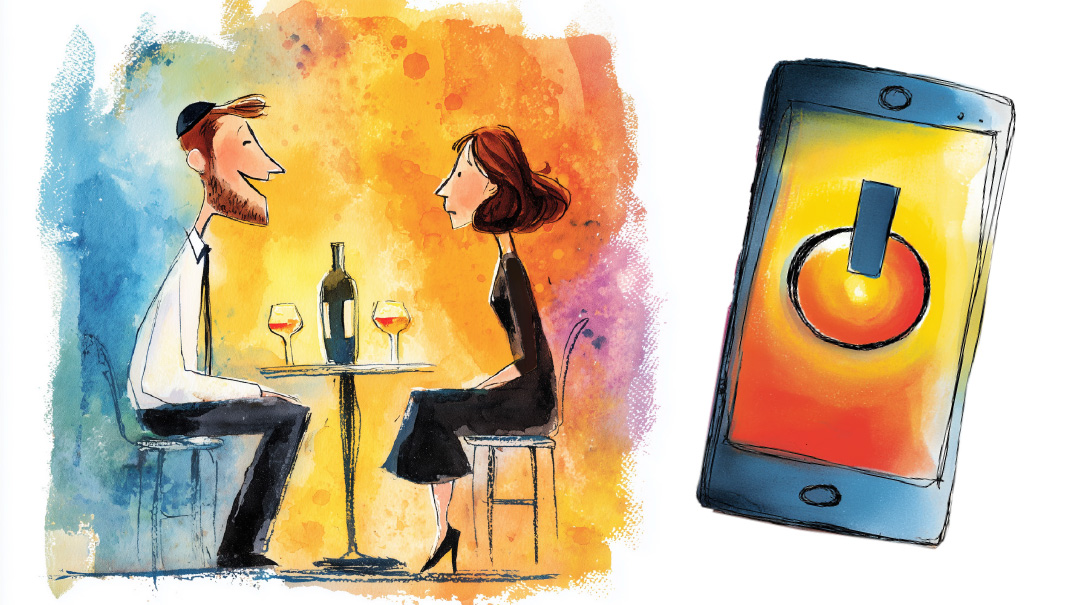Sabotage?
| July 16, 2024We all have different parts to our personality that show up depending on the circumstances

Sabotage?
Shira Savit
“I know what I need to eat, I know what I need to do, but I just don’t do it. I constantly self-sabotage. It just doesn’t make sense!” Sound familiar?
But is it really self-sabotage? Perhaps it’s just a different part of ourselves showing up while we’re eating?
We all have different parts to our personality that show up depending on the circumstances. For example, when we’re taking care of our children, we might be engaging our “nurturing” part. When we’re in the office, we might be engaged in our “intellectual” parts. When we’re out with friends, we might be engaging our “carefree” parts. All of these personas collectively comprise our personality and we fluctuate between them throughout the day.
When we eat, one of these personas is at the forefront. AWhen it comes to emotional eating, usually the adult persona steps aside, allowing younger parts to (subconsciously) take center stage. In other words, we often revert to a certain age when we emotionally eat. We might become a four-year-old or a 14-year-old, sometimes revisiting an age where a difficulty originally began. So when you feel that you're sabotaging yourself, it’s because the adult is no longer in charge. The childish part of us seeks immediate gratification without considering future consequences. The young-child voice says, “I want what I want, and I want it now!” The little child wants to eat chocolate and potato chips instead of protein and vegetables for lunch. She doesn’t consider how she might feel if she eats five cupcakes in a row. This part focuses solely on immediate relief, not on the consequences of overeating.
The teenage voice, on the other hand, has a rebellious, anti-authoritative nature. When our teenager part takes over our eating, it says, “Throw all the rules out the window.” For instance, if you’ve been following a strict diet and suddenly feel an urge to eat forbidden food, the teen rebel is likely at play. You might think, “I know I shouldn’t eat this cake, but I want it anyway.” The Rebel seeks freedom and resists any form of control, which leads us to impulsive eating behaviors.
While the child and the teen are the most common influencers of unwanted eating, there are several other parts that influence our food choices, which I’ll discuss in following installments.
When you reach for food due to stress or other emotions, pause and ask yourself, “Which part is making this decision? Is it the Child seeking comfort or the Rebel resisting control?” Sometimes even just by noticing our voice at the time helps us feel more regulated. We can learn to “invite” the adult in us to the table, so to speak.
Even if it’s hard to do at the time, it’s helpful to reflect later on or even journal about the emotional eating. For example, you can realize, “Today, I felt overwhelmed when my kids got back from camp. I noticed the Child in me seeking comfort through ice cream.” Understanding these dynamics allows you to address the needs of each persona that shows up. You can then ask yourself, “What are other ways to soothe this Child seeking comfort, next time she wants gratification?”
For the Rebel resisting restrictions, we can instead create flexible eating guidelines that allow occasional treats without us feeling deprived.
Exploring the parts that drive our unwanted eating sometimes requires a deeper process of introspection. Working with a therapist or support system can be helpful in addressing these younger parts, understanding how they originated, and doing inner healing by learning more about the origins of these parts and what they’re seeking from our grown-up selves.
When we shift from a self-sabotaging narrative to one of self-introspection, we open the door to understanding the needs of each persona. By addressing these needs in healthy and compassionate ways, we feel more empowered, allowing us to nurture all parts of ourselves in the best way we can.
Shira Savit, MA, MHC, INHC is a mental health counselor and integrative nutritionist who specializes in emotional eating, binge eating, and somatic nutrition. Shira works both virtually and in person in Jerusalem.
Sharing Disappointments
Abby Delouya
E
very person experiences joy and challenge in different ways. It can be a bonding experience and provide you with validation to navigate a difficulty alongside your spouse. Conversely, it can feel isolating and even more stressful to share your feelings about a challenge, only to be met with a less-than-supportive response. What can be even more upsetting, is not to share at all.
Chana and Avi have a daughter who has been in shidduchim for a long time. Every no that their amazing daughter receives is deeply painful for Chana. She’s worried about her daughter, the other kids in line, herself…. And she turns inward.
Avi sees that she retreats every time this happens and tries to sympathize or make her feel better, but Chana is so deep in her own pain, she can’t connect to her husband. After a day or two, she’s back to her optimistic self, but the way she turns inward slowly builds a wall in the couple’s relationship.
It’s hard to be vulnerable. Turning toward our spouse when we feel raw and sad can be scary — even in the protected confines of a great marriage. There is usually a part of an individual that, in a protective move, chooses isolation over sharing; this might be to protect one’s spouse from their pain, a learned behavior from childhood, or because of a discomfort with sharing the deepest, saddest parts of our souls. It’s so much easier to just be okay.
Making the choice to verbalize the pain, fear, and disappointment may feel scary, but the payoff is likely to be a deeper, more connected, and safer relationship.
Abby Delouya RMFT-CCC, CPTT is a licensed marriage and family therapist in private practice, specializing in trauma and addiction. Abby is also the COO and Director of Intake of Ray of Hope.
Out of the Safe Zone
Sara Eisemann
“A ship in harbor is safe, but that is not what ships are built for.”
—John A. Shedd
Humans tend toward inertia. It’s always easier to stay well within the cozy confines of our comfort zone. But the earnest seeker will have to admit that most moments in life that touch infinity are found outside of that space. We feel best at the outer limits of our capacity, which is found squarely in the “stretch” zone.
Sure, we can opt for safe, but to feel like we’re truly living the life we’re meant to live, we sometimes need to leave the harbor.
Sara Eisemann, LMSW, ACSW, is a licensed therapist, Directed Dating coach and certified Core Mentor.
(Originally featured in Family First, Issue 902)
Oops! We could not locate your form.







